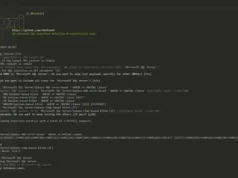Are you a database admin looking for ways to make your life easier? There are plenty of effective strategies to implement and tools to use; it’s just a case of picking the right ones.
To that end, here are some simple tips for monitoring and optimizing an SQL database that won’t overwhelm relative newcomers.
Image Source: Pixabay
Get to grips with monitoring software
The first step to effective SQL database optimization is using suitable software tools, like those found on SentryOne.com.
Monitoring your database is essential because it lets you highlight issues and troubleshoot them proactively. The latest solutions also include automated alerts and can even identify problems that you might have missed, improving performance and reducing the chances of unexpected outages and security vulnerabilities.
Aside from being hugely helpful from moment to moment, monitoring tools can also let you plan for the future. For example, by knowing how your database’s hardware resources are being used today, you can plot out how this will change over time and schedule upgrades accordingly.
Tinker with quarrelsome queries
Query optimization is the bread and butter of database admins. It is a breeze to find the operations causing the most unwarranted performance bottlenecks using the aforementioned monitoring tools.
Looking at execution plans can help you visualize how queries are constructed and weed out inconsistencies and imperfections.
Also, remember that your query tinkering is best done according to accepted standards. This is helpful because it will mean that when others encounter the database, they will be able to manage it without adapting their skills too much.
That is not to say there is no room for improvisation, but rather that any personal touches you do apply to queries should be consistent across the board.
Don’t forget about indexes
Indexing is a feature of SQL databases that speeds up its time to retrieve the relevant information from tables. Instead of needing to scour the whole thing, queries can search indexes to find what they need.
Of course, indexes are not a ‘set and forget feature, but rather something which needs to be monitored and maintained.
For example, they can become fragmented and disordered with use, which has a negative impact on performance. In this case, you should remember to rebuild indexes regularly or reorder them if the level of fragmentation is relatively low.
Remember the role of hardware
We have already touched on how monitoring an SQL database can prepare you for your future hardware needs. Still, it is worth noting that this can also assist with optimizations and troubleshooting right now.
Dialing into how resources are being used and which processes are the most hardware-intensive will give you a better understanding of where problems might lie and if any changes you make have had the desired effect.
In essence, managing an SQL database is a never-ending job, yet one which can be carried out with less frustration if you know what to look out for.


























.webp)